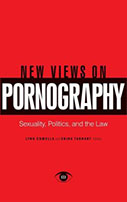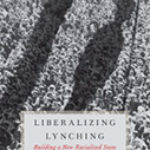New Views on Pornography: Sexuality, Politics, and the Law

Editors: Lynn Comella and Shira Tarrant
Publisher: Santa Barbara, CA: ABC-CLIO, LLC., 2015. 465p.
Reviewer: Amber L. Morczek | May 2015
In the book, New Views on Pornography: Sexuality, Politics, and the Law, editors Comella and Tarrant provide readers with a sophisticated and appropriately extensive overview of pornography in a text that could easily function as a ‘desk reference’ on the subject. Indeed, the book tackles a variety of subjects relating to pornography. These subjects include legal, religious, and political underpinnings, gender, race, sexuality, and the varying viewpoints therein. The editors claim to take “a fresh look at a provocative topic” (p. 3) with their diverse compilation of essays, and absolutely succeed in doing so.
There are several components of the text worth noting, including its accessibility. Compared to other texts on the subject, the foundational historical information necessary to contextualize the topic is profoundly comprehensive and presented in a straightforward manner in various levels of depth and breadth across several chapters. Furthermore, the authors were careful to produce pertinent legal information (including, but not limited to Supreme Court cases and 1st Amendment issues) in a palatable manner; remaining detailed, yet easily consumable even by those who find law a bit arduous to ingest.
Secondly, readers will especially appreciate the editor’s inclusion of a variety of interdisciplinary essays that amalgamate into a text that is both entertaining and educationally dexterous. For example, not only is an entire chapter dedicated to the relatively recent phenomenon of “revenge porn,” but chapters on LGTBQ-oriented porn, bestiality porn, the neuroscience behind porn consumption, and media literacy are also seamlessly integrated into the book. Moreover, an entire section of the book is dedicated to the socio-cultural implications of pornography, as the editors were clearly aware that providing readers with this information provides some much need contextual insight, especially given the contemporary size and scope of the industry.
Of personal interest was the chapter entitled, “Race and the Politics of Agency in Porn: A Conversation with Black BBW Performer Betty Blac.” As the name implies, the chapter was conversational in nature and nicely juxtaposed with other parts of the book, as it was a fluid and fascinating read detailing a performer’s journey within the pornography industry. With the exception of a few industry publications and select memoirs from porn stars, this was, in my opinion, one of the few essays that provide a seemingly honest assessment of navigating the industry from the inside.
Readers will likely appreciate the chapter entitled, “‘She’s Totally Faking It!”: The Politics of Authentic Female Pleasure in Pornography.” As the name implies, this chapter denotes how signifiers of pleasure, particularly female pleasure in a hetero-normative context, are commonly interpreted in pornography as largely feigned and grossly synthetic. The author’s use of “unfocused groups” as her methodology (i.e. allowing the audience to talk amongst themselves after viewing pornography, as opposed to a formal focus group where a facilitator asks participants a series of predetermined questions) allowed for, as she puts it, “natural, unscripted interaction” among the male and female participants (p. 323). Results indicate how viewers “read, engage with, criticize, and possibly identify with sexual performances in pornography” (p. 328). Accordingly, this qualitative piece greatly contributes to the literature on pornography consumption across genders and is a must read for those interested in how female pleasure is portrayed in pornographic media.
Overall, New Views on Pornography: Sexuality, Politics, and the Law, is surely a compelling and dynamic read. While its meticulous detail is likely suitable for academics seeking to bolster their scholarship in pornography studies, the text is also sufficiently readable, albeit a bit verbose, for those seeking exploratory information sans requisite academic expertise. The editors have certainly brought together a vibrant group of interdisciplinary authors to advance a deeply complex topic often sullied with confusing adversarial discourse, relative social stigma, and misinformation. I would highly recommend, New Views on Pornography: Sexuality, Politics, and the Law, to anyone seeking a consolidated text detailing the past, present, and future of pornography.
Amber L. Morczek, PhD Candidate, Washington State University, Department of Criminal Justice and Criminology


